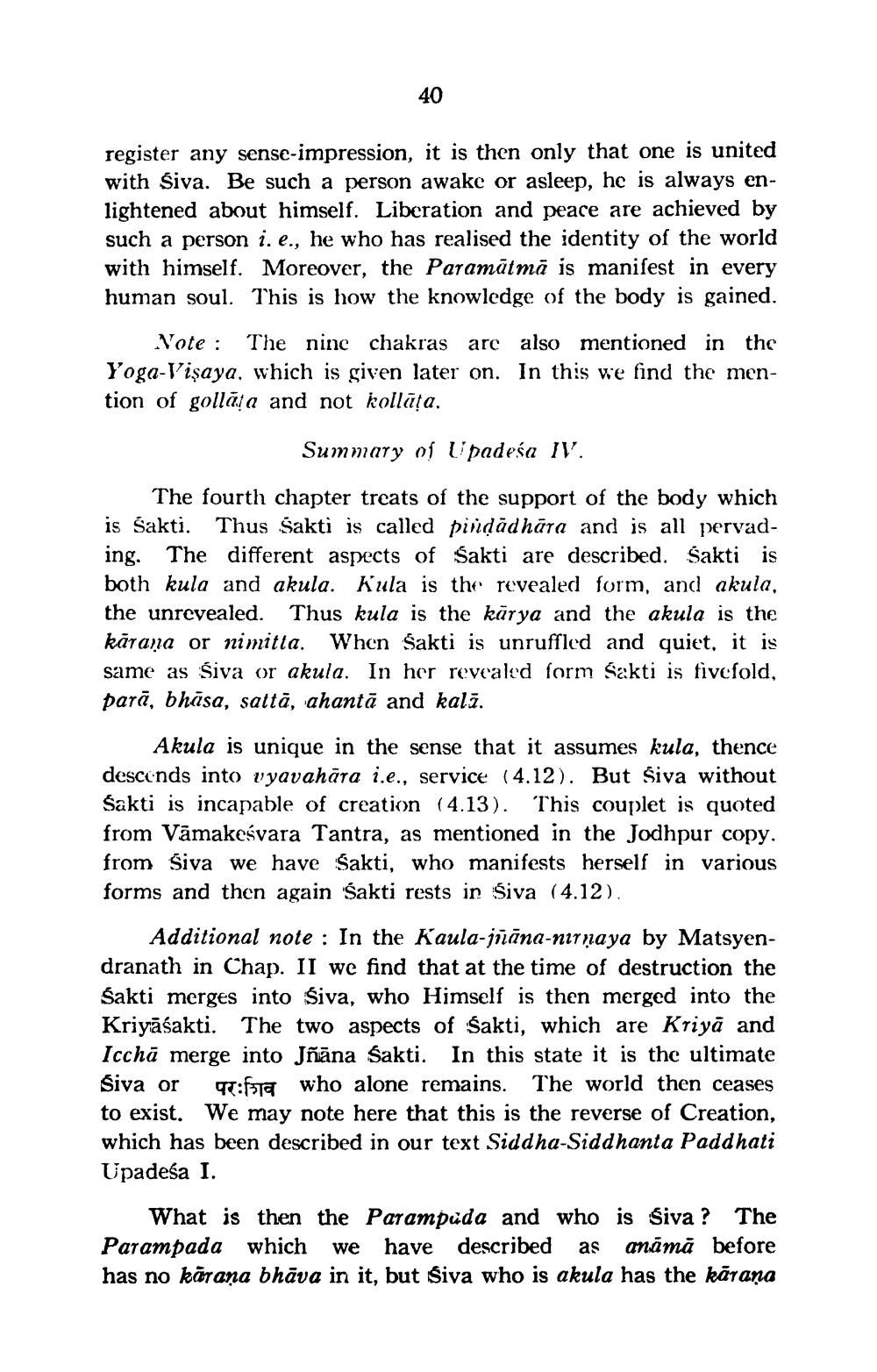________________
40
register any sense-impression, it is then only that one is united with Siva. Be such a person awake or asleep, he is always enlightened about himself. Liberation and peace are achieved by such a person i. e., he who has realised the identity of the world with himself. Moreover, the Paramātmā is manisest in every human soul. This is how the knowledge of the body is gained.
Vote : The nine chakras are also mentioned in the Yoga-V'işaya, which is given later on. In this we find the mention of gollāła and not kollāța.
Summary of l'padeśa IV.
The fourth chapter treats of the support of the body which is Sakti. Thus Sakti is called pindădhāra and is all per ing. The different aspects of Sakti are described. Sakti is both kula and akula. Kula is the revealed form, and akula, the unrevealed. Thus kula is the kärya and the akula is the kārana or nimitta. When Sakti is unruffled and quiet, it is same as Śiva or akula. In her revealed form Sakti is fivefold, parā, bhāsa, sattā, ahantā and kalā.
Akula is unique in the sense that it assumes kula, thence descinds into vyavahāra i.e., service (4.12). But Siva without Sakti is incapable of creation (4.13). This couplet is quoted from Vāmakesvara Tantra, as mentioned in the Jodhpur copy. from Siya we have Sakti, who manifests herself in various forms and then again sakti rests in Siva (4.12).
Additional note : In the Kaula-jñāna-nitnaya by Matsyendranath in Chap. II we find that at the time of destruction the Śakti merges into śiva, who Himself is then merged into the Kriyāsakti. The two aspects of Sakti, which are Kriya and Icchā merge into Jñana Sakti. In this state it is the ultimate Siva ortofra who alone remains. The world then ceases to exist. We may note here that this is the reverse of Creation, which has been described in our text Siddha-Siddhanta Paddhati Upadeśa I.
What is then the Parampuda and who is Siva ? The Parampada which we have described as anāmā before has no kārana bhāva in it, but Siva who is akula has the kātana




